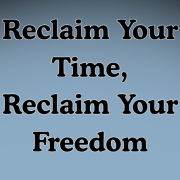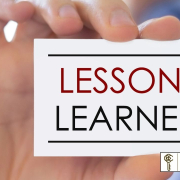Building Visibility: Why Marketing and Networking Matter More Than Ever
If you’ve ever looked up from your desk and realized you haven’t seen another human being (besides your clients or your cat) in days… yeah, welcome to entrepreneurship. It’s the classic trap — you get so absorbed working in your business that you stop working on it.
One project becomes ten. Your inbox starts looking like a crime scene. Client requests keep rolling in. And without even noticing, the networking events, coffee meetups, and marketing plans you swore you’d “get back to soon” quietly disappear from your calendar.
At Concierge Business Solutions®, we get it — deeply. When you run a service-based business, it’s easy to get swallowed by the doing. But here’s the truth:
Visibility isn’t optional. It’s essential.
Even the most incredible business can’t grow if no one knows it exists.
That’s why intentional marketing and relationship-driven networking aren’t “nice extras” — they’re the foundation of sustained success.
The Myth of “I Get All My Business by Referral”
 Referrals are fantastic — they’re the gold star of trust. But depending only on referrals is like eating leftovers every night. It’ll get you by, but you never really know what you’re going to get or when.
Referrals are fantastic — they’re the gold star of trust. But depending only on referrals is like eating leftovers every night. It’ll get you by, but you never really know what you’re going to get or when.
The most successful concierge and lifestyle management companies don’t wait for opportunities to fall into their lap. They create visibility. They nurture relationships. They stay top of mind.
Referrals are great — but strategy keeps you growing.
Marketing: Showing Up With Purpose
Marketing isn’t about shouting louder than everyone else. It’s about showing up consistently, clearly, and confidently so your ideal clients can actually find you.
A strong marketing strategy for a concierge or lifestyle management company should:
-
Show your expertise. Share real stories, insights, and the behind-the-scenes magic of what you do.
-
Build credibility. Testimonials, case studies, and community involvement speak louder than any ad.
-
Keep you visible. Newsletters, blog posts, quick videos — each touch gets you remembered.
-
Use modern tools wisely. QR codes, short-form videos, digital brochures — small tools with big impact.
The point isn’t to do more marketing. It’s to do meaningful marketing that reflects your brand and attracts the people who genuinely need you.
Networking: Connection With Intention
 Networking isn’t just swapping business cards and hoping something sticks. It’s about building real relationships that turn into referrals, partnerships, and opportunities you’d never find on your own.
Networking isn’t just swapping business cards and hoping something sticks. It’s about building real relationships that turn into referrals, partnerships, and opportunities you’d never find on your own.
And honestly? The secret is consistency.
The more you show up — professionally, authentically, reliably — the more your name becomes the one people remember.
Relationships are still the strongest marketing tool on earth.
The Overlooked Benefit of Marketing and Networking
Here’s the part most entrepreneurs miss:
Visibility builds confidence.
When you’re present in your industry and connected in your community:
-
You stop running from a place of urgency.
-
You make smarter decisions.
-
You attract better-fit clients.
-
You stop chasing business — it starts finding you.
That’s the real power of showing up.
Ready to Take the First Step Toward Freedom?
If you’re tired of living in reaction mode and you’re ready to take intentional control of your business, it’s time to jump into the 5 Days to Freedom Challenge.
In just five focused days, you’ll:
✨ Uncover the bottlenecks holding you back
✨ Learn the systems that create time, clarity, and breathing room
✨ Reconnect with the purpose behind your business
✨ Build the foundation for sustainable, confident growth
This challenge isn’t about grinding harder.
It’s about building smarter systems so your business can finally support the life you’re trying to build.
👉 Join the 5 Days to Freedom Challenge today (insert QR code).
Give yourself five days — and take back your business.
You’ve built something worth growing.
Let’s give it the visibility it deserves.



 1. Document Everything
1. Document Everything If you’re ready to create a company that can run—and sell—without you, Concierge Business Solutions® can help.
If you’re ready to create a company that can run—and sell—without you, Concierge Business Solutions® can help.
 A solid strategy provides direction: clear goals, measurable outcomes, and systems to support your vision. But it’s your mindset that helps you stay focused when things don’t go according to plan.
A solid strategy provides direction: clear goals, measurable outcomes, and systems to support your vision. But it’s your mindset that helps you stay focused when things don’t go according to plan. Practical Ways to Strengthen Your Entrepreneurial Mindset
Practical Ways to Strengthen Your Entrepreneurial Mindset
 AI can accelerate
AI can accelerate  If you’ve been feeling the weight of “busyness” despite AI’s promises of efficiency, you’re not alone. The good news is, you don’t have to stay stuck.
If you’ve been feeling the weight of “busyness” despite AI’s promises of efficiency, you’re not alone. The good news is, you don’t have to stay stuck.
 What Is the 5-Day Freedom Challenge?
What Is the 5-Day Freedom Challenge? What Makes This Challenge Different
What Makes This Challenge Different



 Whether you’re a local service provider in Palm Desert or a boutique shop in La Quinta, a chatbot can help you:
Whether you’re a local service provider in Palm Desert or a boutique shop in La Quinta, a chatbot can help you:
 1️⃣ Nail Your Idea & Value Proposition
1️⃣ Nail Your Idea & Value Proposition 7️⃣ Plan & Execute a Sales Strategy
7️⃣ Plan & Execute a Sales Strategy

